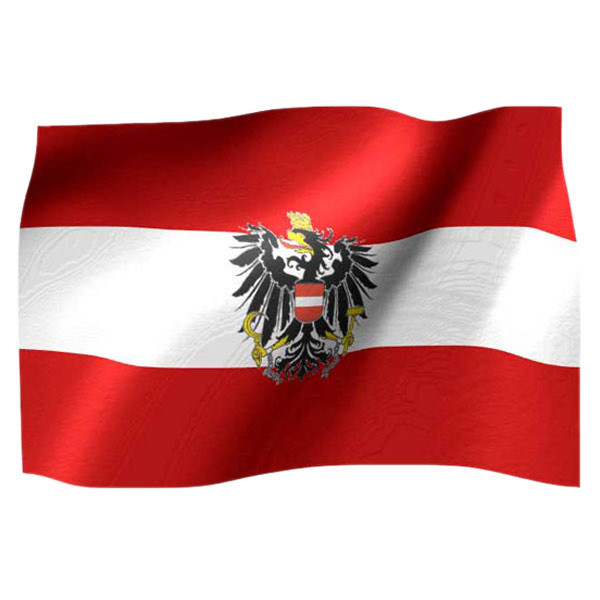The Fountain of Garibaldi
Questa Earthcache conduce ad un pozzo geologicamente interessante, dove la formazione del travertino è particolarmente importante. La roccia, il travertino che qui si forma dalle precipitazioni, è spiegato più in dettaglio di seguito.
Il Travertino
Il travertino è una roccia sedimentaria relativamente giovane, secondaria, abbastanza porosa che viene precipitata in sorgenti di acqua dolce fredda o calda. Il termine "roccia sedimentaria secondaria" significa che quando si forma il travertino, i sedimenti calcarei primari vengono nuovamente depositati dopo l'erosione generata della soluzione chimica e la successiva precipitazione. Il travertino può essere modellato con coltelli e seghe a mano quando è umido.
Il travertino è una roccia tenera, in senso stretto è un calcare d'acqua dolce. Di solito non mostra alcuna stratificazione netta, è da molto poroso a cavernoso, cioè permeato da cavità e contiene parti pietrificate di pianti.
La formazione del travertino avviene per precipitazione di carbonato di calcio da soluzioni acquose che emergono dalle zone carsiche. Il prerequisto è che l'acqua che fuoriesce sia stata in grado di assorbire gli ioni di calcio e di carbonato quando ha attraversato il substrato roccioso. Quando quest'acqua viene in superficie, fuoriesce anidride carbonica e il carbonato di calcio precipita sotto forma di travertino. Questo processo può essere accelerato dall'attivita di fotosintesi delle alghe o del muschio che assorbono l'anidride carbonica.
Per loggare questa Earthcache devi:
Rispondere alle seguenti domande con parole tue e inviarmi le risposte tramite messagio al mio profilo:
1.) In quali condizioni si formerà ulteriore travertino sulla roccia del pozzo, cosa deve accedere?
2.) Riesci a vedere le piante pietrificate nel travertino del pozzo? In caso affermativo, quali piante sono?
3.) Dai un'occhiata più da vicino al travertino: descrivi il colore, la superficie e la consistenza della roccia con parole tue!
4.) Facoltativo: Se volete, siete cordialmente invitati ad allegare al vostro log una foto di voi / vostro GPS presso le coordinate del listing.
È possibile accedere registrare il ritrovamento immediatamente dopo che mi hai inviato le risposte! Non c'è bisogno di attendere una conferma da parte mia! Se c'è qualcosa di sbagliato, ti contatterò.

This Earthcache leads to a geologically interesting well, where the formation of tufa limestone is particularly clear. The rock, the tufa limestone formed here by precipitation, is presented in more detail below.
Tufa
Limestone tufa is a relatively young, secondary, quite porous sedimentary rock that is precipitated from cold or warm freshwater springs. The term "secondary sedimentary rock" means that when limestone tufa is formed, primary limestone sediments are deposited again after chemical solution weathering and subsequent precipitation. Limestone tufa can be shaped with knives and hand saws when it is damp.
Limestone tufa is a soft rock, strictly speaking it is a freshwater limestone. It usually does not show any clear stratification, it is very porous to cavernous, i.e. permeated by cavities and partly contains petrified parts of plants.
The formation of limestone tufa occurs through the precipitation of calcium carbonate (lime) from aqueous solutions that emerge from karst areas. The prerequisite is that the escaping water was able to absorb calcium and carbonate ions when it seeped through the bedrock in the course of carbonic acid weathering. When this water comes to the surface, carbon dioxide escapes and the calcium carbonate precipitates in the form of tufa. This process can be accelerated by the photosynthetic activity of the algae or moss.
Your task to log this Earthcache as found:
Answer the following questions in your own words and send me the answers via message to my profile:
1.) Under what conditions will further tufa form on the well rock, what must happen?
2.) Can you see the shapes of the plants involved in the limestone tufa of the well rock? If so, which plants are they?
3.) Take a closer look at the limestone tufa - describe the colour, surface and texture of the rock in your own words!
4.) Optional: If you like, you are warmly invited to add a picture of you / your GPS at the location to the log!
You can log immediately after you sent me the answers! There is no need to wait for a log permission! If there's something wrong, I'll contact you.

Dieser Earthcache führt dich zu einem geologisch interessanten Brunnen, bei dem die Entstehung von Kalktuff (Quelltuff) besonders anschaulich erkennbar ist. Das Gestein, der hier durch Ausfällung entstehende Quelltuff, wird folgend näher vorgestellt.
Quelltuff
Unter Quelltuff (Kalktuff) versteht man ein relativ junges, sekundäres, recht poröses Sedimentgestein, das aus kalten oder warmen Süßwasserquellen ausgefällt wird. Der Begriff "sekundäres Sedimentgestein" bedeutet, dass bei der Entstehung von Quelltuff (Kalktuff) primäre Kalksedimente nach chemischer Lösungsverwitterung und nachträglicher Ausfällung erneut abgelagert werden. Quelltuff (Kalktuff) kann in bruchfeuchtem Zustand mit Messern und Handsägen geformt werden.
Quelltuff (Kalktuff) gehört zu den Weichgesteinen, genau genommen handelt es sich um einen Süßwasserkalk. Er zeigt üblicherweise keine deutliche Schichtung, ist stark porös bis kavernös, also von Hohlräumen durchzogen und enthält teilweis versteinerte Pflanzenteile.
Die Bildung von Quelltuff erfolgt durch Ausfällung von Calciumcarbonat (Kalk) aus wässrigen Lösungen, die aus Karstgebieten austreten. Voraussetzung ist, dass das austretende Wasser beim Durchsickern des Grundgesteins im Zuge der Kohlensäure-Verwitterung Calcium- und Carbonat-Ionen aufnehmen konnte. Wenn dieses Wasser an die Erdoberfläche tritt, entweicht Kohlendioxid und das Calciumcarbonat fällt in Form von Kalktuff aus. Dieser Prozess kann durch Photosyntheseaktivität von vorkommenden Algen oder Moosen noch beschleunigt werden.
Deine Aufgabe um diesen Earthcache zu loggen:
Schicke mir die Antworten auf die folgenden Fragen in eigenen Worten per Message an mein Profil:
1.) Unter welchen Bedingungen wird sich auf dem Brunnenfelsen vor Ort weiterer Kalktuff bilden, was muss geschehen?
2.) Kannst du im Kalktuff des Brunnenfelsens Formen beteiligter Pflanzen erkennen? Wenn ja, um welche Pflanzen handelt es sich?
3.) Betrachte den Kalktuff genauer - beschreibe Farbe, Oberfläche und Textur des Gesteins mit eigenen Worten!
4.) Optional: Wenn du möchtest, bist du herzlich eingeladen, ein Bild von dir und/oder deinem GPS-Gerät vor Ort mit dem Log hochzuladen!
Du kannst sofort loggen, nachdem du mir die Antworten per Message geschickt hast! Es ist nicht notwendig, auf eine Logerlaubnis zu warten! Sollte bei deinen Antworten etwas gar nicht passen, melde ich mich bei dir.
Many thanks to fellow cacher Palenoi for the translation of the Italian version!
Have fun and enjoy!
Sources:
Reinsch, Dieter: Natursteinkunde. Eine Einführung für Bauingenieure, Architekten, Denkmalpfleger und Steinmetze. Stuttgart 1991.
www.wikipedia.org
www.chemikus.de
The picture was taken by the author.
 The most exciting way to learn about the Earth and its processes is to get into the outdoors and experience it first-hand. Visiting an Earthcache is a great outdoor activity the whole family can enjoy. An Earthcache is a special place that people can visit to learn about a unique geoscience feature or aspect of our Earth. Earthcaches include a set of educational notes and the details about where to find the location (latitude and longitude). Visitors to Earthcaches can see how our planet has been shaped by geological processes, how we manage the resources and how scientists gather evidence to learn about the Earth. To find out more click HERE.
The most exciting way to learn about the Earth and its processes is to get into the outdoors and experience it first-hand. Visiting an Earthcache is a great outdoor activity the whole family can enjoy. An Earthcache is a special place that people can visit to learn about a unique geoscience feature or aspect of our Earth. Earthcaches include a set of educational notes and the details about where to find the location (latitude and longitude). Visitors to Earthcaches can see how our planet has been shaped by geological processes, how we manage the resources and how scientists gather evidence to learn about the Earth. To find out more click HERE.